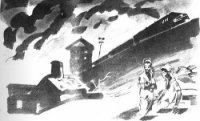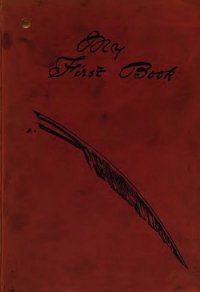Operation Nemesis: The Assassination Plot that Avenged the Armenian Genocide - Bogosian Eric (мир книг .txt) 📗
As the defense funds were redirected, Armen Garo crowed, “Money is no problem.” He instructed Sachaklian in Boston to continue to forward money directly to Natali in Paris, adding, “What is left over [from the defense of Tehlirian] will in fact be used to continue the work, but without the committee knowing.”5 The “committee” Garo was referring to was the “Body Responsible Abroad” or ABM (Ardasahmani Badaskhanadu Marmin), the Tashnag board that oversaw all of the ARF’s affairs at the highest level. It was the final arbiter of the Hadug Marmin, or Special Corps, that is, the Nemesis operation.
The ABM suspected that Garo and Natali were acting independently of their oversight, so they clarified their instructions: “The money collected must be used for the purpose for which it was collected.”6 The ARF were demanding that any surplus funds be returned to the organization. Garo and Natali wanted to use this surplus to continue the pursuit of former Ittihadists.
The schism between Garo and Natali and the rest of the Tashnag leadership had deepened, and there was a clear disagreement as to how far this revenge conspiracy against the former CUP leadership should proceed. By the mid-1920s, the ABM felt that the primary mission had been accomplished and wanted Nemesis shut down.7 (The ABM was even exploring an anti-Soviet pact with Turkey.)8 Natali was livid. He believed that the “work” had only begun. But revenge was far from the minds of the Armenian leadership. While Nemesis was intent on assassinating Turkish leaders, the first Republic of Armenia was quickly becoming a historical footnote as the Soviets and Kemalist forces from Turkey surrounded and closed in on the tiny mountain nation.
Kemal had forced the British, in particular, to make a crucial decision: either give up on the Wilsonian notion of a partitioned postwar Turkey or commit to full-scale war with no end in sight. The seasoned general understood that the Allies had lost their taste for battle, while his men, though exhausted, would continue to fight for survival. There was no way of knowing what the consequences would be if a Wilsonian mandate or a Treaty of Sevres could be effected. Kemal sensed that the British would jump at any excuse to abandon the front. On the other side of the border, Yerevan was teeming with starving, disease-ridden Armenian refugees and orphans. Thousands upon thousands were dying of hunger and typhus. It was in that context that Operation Nemesis continued its “work.”
Khan Javanshir (Constantinople, July 18, 1921)
A few weeks after Tehlirian was acquitted, Misak Torlakian, assisted by Haroutiun Haroutiunian and Yervant Fundukian, gunned down Behbud Khan Javanshir outside the Pera Palace Hotel in Constantinople. Javanshir was the former Azerbaijani internal affairs minister in Baku. Because of the massive oil reserves there, Baku in Azerbaijan was a vital strategic city within the Russian Empire. Pan-Turanist Turks saw Azerbaijan as an extension of a potential Turkish empire, one that could extend eastward all the way to China. Javanshir was aligned with the Young Turks in this respect.
The Armenians of Baku had traditionally been the businessmen who traded in petroleum products. (Before oil was used for internal combustion engines, it was in demand for lamps and machine lubrication.) In this role they constituted a significant segment of the middle class and as such were the focus of Muslim resentment. The Soviets, to the degree that they had any ability to control the city, tried to suppress the constant Muslim-Armenian feuding, but in March of 1918, harsh fighting broke out. Atrocities were committed in Baku against the Muslim population.9 Then in September 1918, as Enver Pasha’s “Army of Islam” invaded the city, the local Azerbaijanis meted out payback to the Christian Armenians of Baku. Some ten to thirty thousand ethnic Armenians died in the violence. The Tashnags blamed Javanshir, who had been minister of internal affairs at the time, for the massacres. After the Soviets locked down Azerbaijan, Javanshir escaped Baku, moving to Constantinople, where he hoped to enjoy the protection of British occupation. The Tashnags knew he was residing in the Pera district of Constantinople and approved the hit.
Misak Torlakian was more experienced with firearms and combat than Tehlirian; in fact, he was given his first pistol when he was twelve years old. He had been a gunrunner for the Tashnags, a reconnaissance scout with the Russian army, and under General Dro had fought in the final battles to save Armenia. Like Tehlirian, he had returned to his home village to find it depopulated. Nearly everyone in his family had been murdered. The only survivor was a sister who had been taken by a Muslim as his wife. Like Tehlirian, Torlakian sought to avenge his family, and the Tashnags recruited him in Constantinople.
On July 18, 1921, Khan Javanshir was gunned down as he returned to his suite at the luxurious Pera Palace after seeing a show at the Petit Champ theater. Torlakian and his cohorts had spent hours lying in wait for Javanshir and his entourage in a nearby garden bistro, and when Javanshir appeared, Torlakian charged up to him and fired. Wounded, Javanshir grabbed Torlakian’s wrist. The twenty-nine-year-old assassin fired two more rounds into his victim’s chest. Javanshir fell to the ground with a groan. Chaos broke out on the crowded street, allowing Torlakian to slip away, but upon hearing the moans of the wounded Javanshir, he ran back and shot the Azerbaijani point-blank in the head.
French military police quickly arrived on the scene and arrested Torlakian. He was beaten into unconsciousness and awoke the next day locked in a cell, facing trial for murder in occupied Constantinople. Under instructions from his handlers, he commenced to feign the same symptoms of “epilepsy” that had worked so well for Tehlirian. He made sure that his fellow inmates saw him collapse and foam at the mouth. Like Tehlirian, he contrived a story about witnessing firsthand the slaughter of his family. (In his fictional narrative, Torlakian moved the location of his family’s demise from Trebizond on the Black Sea to Baku, thus giving him a motivation to seek Javanshir’s death.) In late August, only months after Tehlirian’s acquittal, Torlakian was brought before a British tribunal arranged by the occupying government. His defense team exploited the intense British antipathy toward the Turkish.
This trial, like Tehlirian’s in Berlin, was embraced by the Tashnags as a way to publicize Muslim atrocities, particularly the attacks on the Armenians of Baku. The Azerbaijanis, perhaps alert to what had transpired at the Berlin trial, summoned their own witnesses, who testified in court that the Armenians had committed atrocities against them first (in March of 1918) and that from their perspective the Armenians were exaggerating the Baku massacres of September 1918. The trial devolved into a he said/she said tug-of-war, with no clear resolution. Unlike the proceedings in Berlin, this trial operated under the auspices of an occupying military force, in a major Middle Eastern capital. Javanshir was unknown outside Turkey and Azerbaijan. No supporting testimony was provided by the likes of a Professor Lepsius or a General Liman von Sanders, and the international press showed little interest. Yet once again the focus of the trial was shifted from a political murder to a public forum on violence against Armenians.
As in the Tehlirian trial, a slew of doctors and fellow inmates testified to the accused’s mental instability and fainting spells, and raised various theories as to whether such a person could act rationally and commit cold-blooded murder while under the influence of a psychological disease. Torlakian testified on his own behalf that in 1918, in Baku, when the massacres began, he had been confined to bed after having been shot on the street. He explained that while he lay in his room fading in and out of consciousness, Muslim paramilitaries had entered his apartment and murdered his entire family. When confronted with his own crime, he stated, “My conscience is completely at peace.”10




